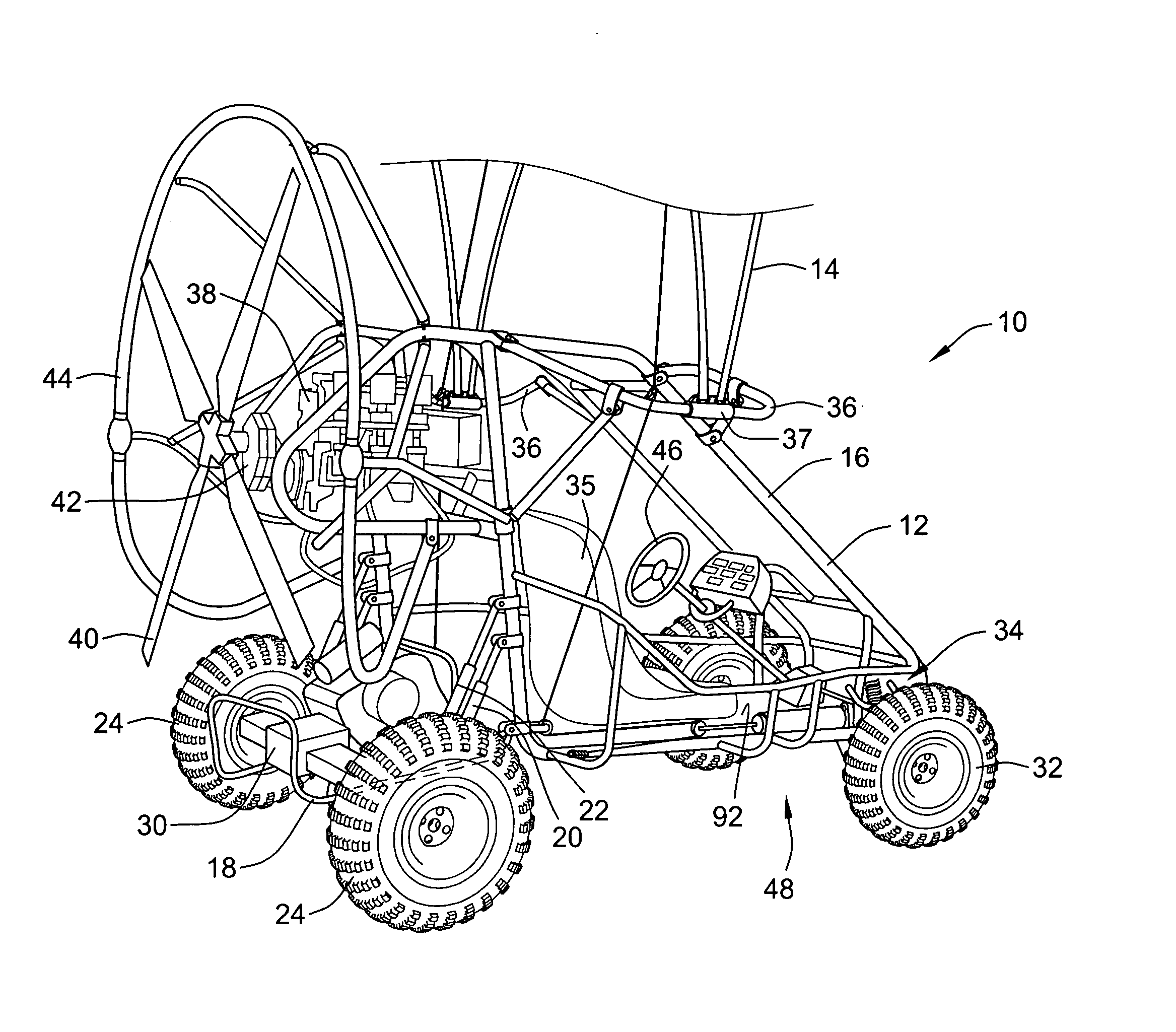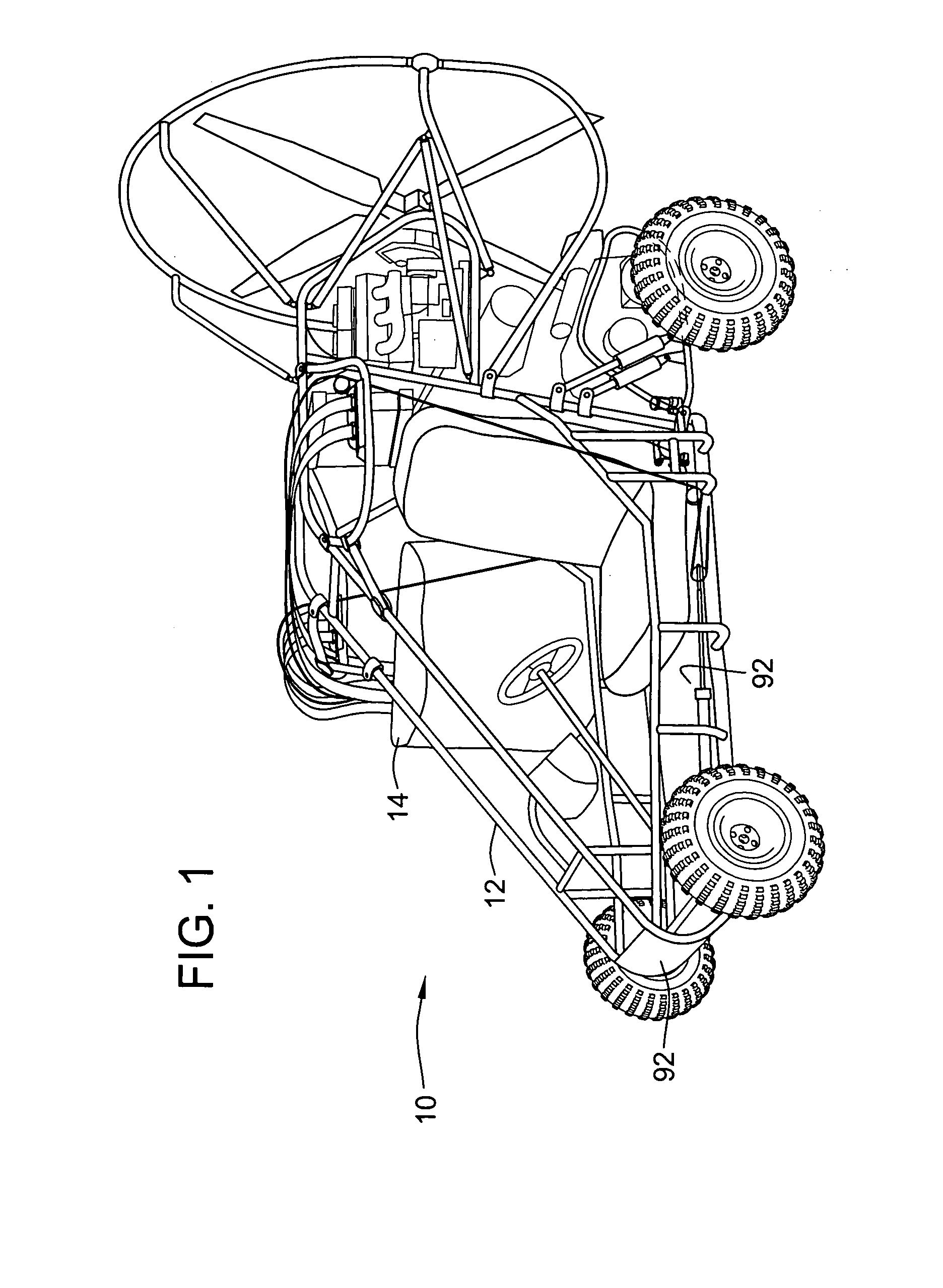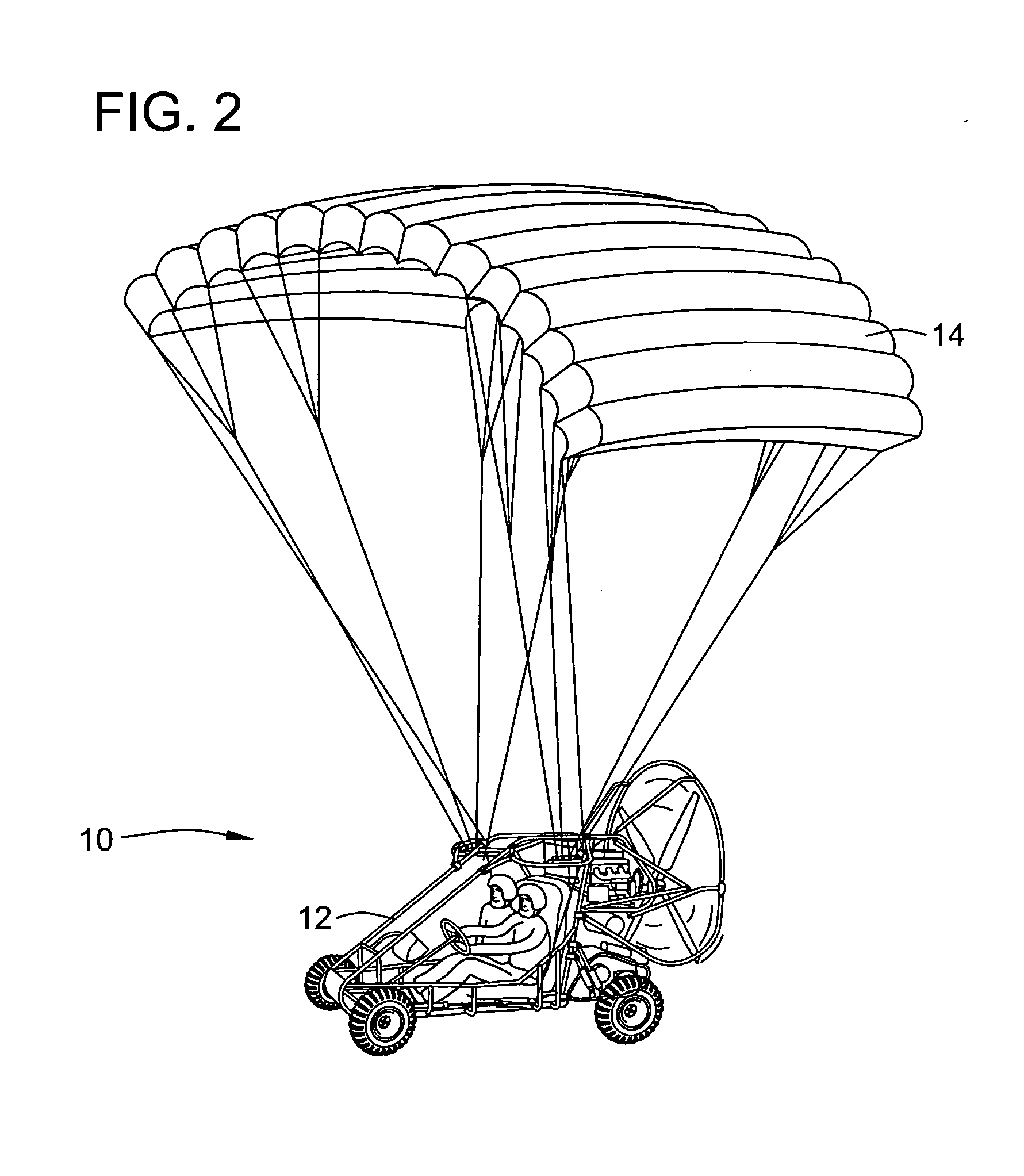Flying all-terrain vehicle
- Summary
- Abstract
- Description
- Claims
- Application Information
AI Technical Summary
Benefits of technology
Problems solved by technology
Method used
Image
Examples
first embodiment
[0070] On the ground it is anticipated that a vehicle 10 according to the invention, the invention will normally be configured to travel over unimproved terrain at a maximum speed of 30 to 35 miles per hour as an ATV, while being powered with the ground propulsion apparatus, but the configuration of the vehicle 10 allows safe operation on the ground at significantly higher speeds. As a flying vehicle, the airspeed will be around 35 to 40 mph. Those skilled in the art will also recognize that the vehicle 10 can be propelled on the ground with the propeller 40 driven by the aircraft engine 38. Although this could not be done on a roadway where propeller-driven operation is prohibited, on flat level terrain, the vehicle 10 can be propelled by the propeller 40 and aircraft engine 38, and has been shown to be highly controllable at speeds up to 70 miles per hour, by virtue of the construction of the vehicle 10. Attempts to operate prior powered parachutes on the ground as ATVs have typic...
second embodiment
[0071]FIGS. 9-15 show a second exemplary embodiment of a vehicle 100, according to the invention, in the form of a flying ATV of a larger size providing significantly more ground clearance, higher operating speeds both on the ground and in the air, and more cargo carrying capability than the first exemplary embodiment of the invention described above in relation to FIGS. 1-8. Many aspects and features of the flying ATV 100 bear substantial similarity to the aspects and features described above in relation to the first exemplary embodiment of the flying ATV 10.
[0072] As shown in FIGS. 9 and 10, the vehicle 100 includes a chassis 102 and a parachute 104 operatively attached to the chassis 102 by outriggers 106, in a manner similar to that described above for attaching the parachute to the chassis in the first exemplary embodiment of the invention described above. In FIG. 9, the parachute 104 is illustrated in a deployed position. In FIG. 10, the parachute is illustrated as packed insi...
PUM
 Login to View More
Login to View More Abstract
Description
Claims
Application Information
 Login to View More
Login to View More - R&D
- Intellectual Property
- Life Sciences
- Materials
- Tech Scout
- Unparalleled Data Quality
- Higher Quality Content
- 60% Fewer Hallucinations
Browse by: Latest US Patents, China's latest patents, Technical Efficacy Thesaurus, Application Domain, Technology Topic, Popular Technical Reports.
© 2025 PatSnap. All rights reserved.Legal|Privacy policy|Modern Slavery Act Transparency Statement|Sitemap|About US| Contact US: help@patsnap.com



